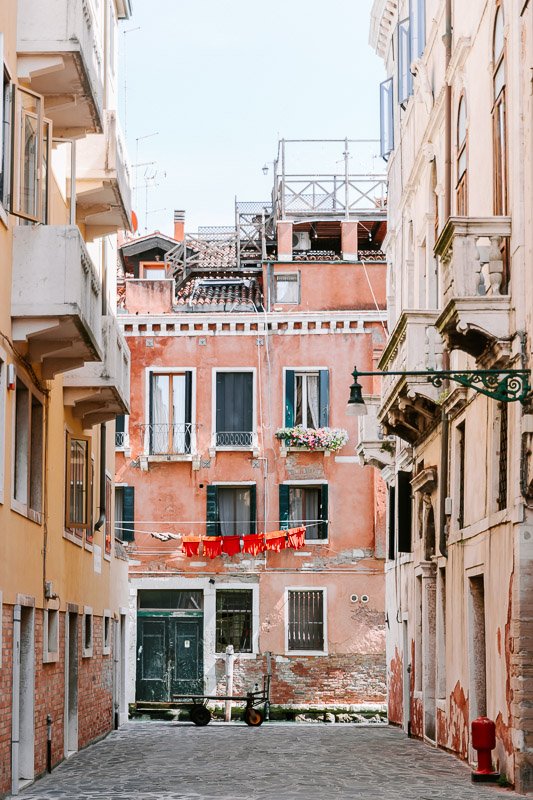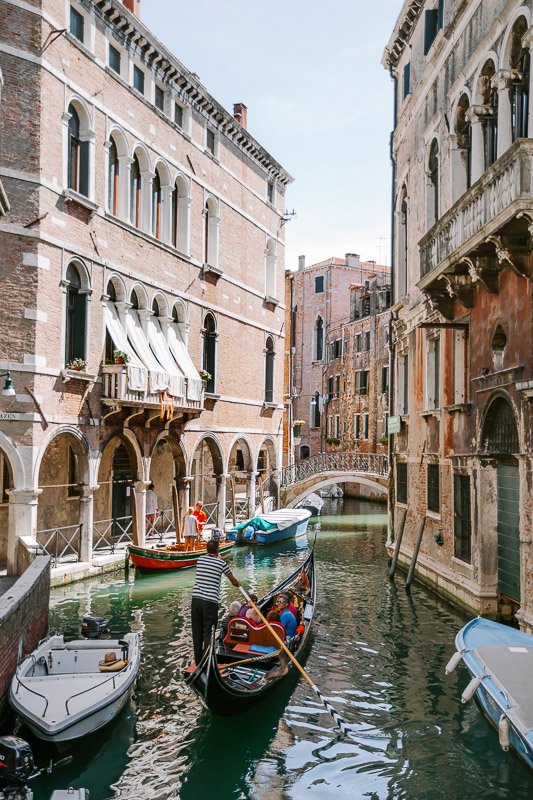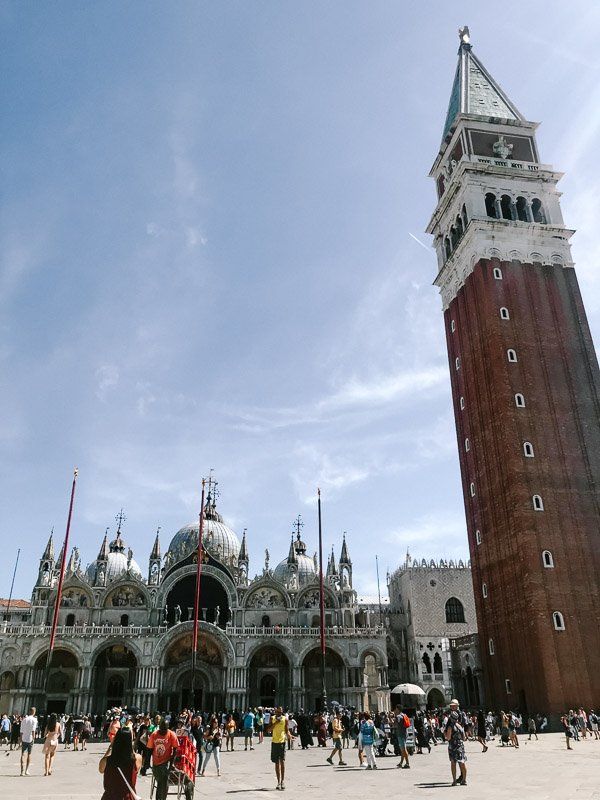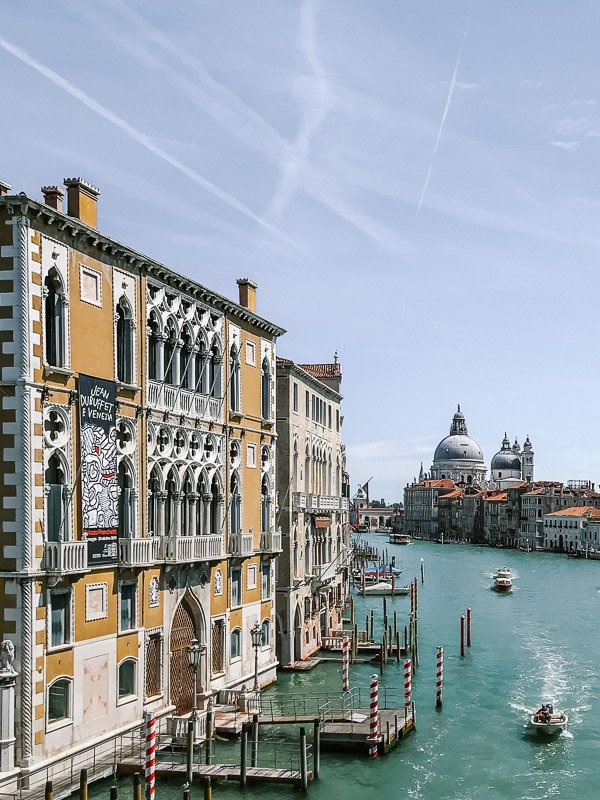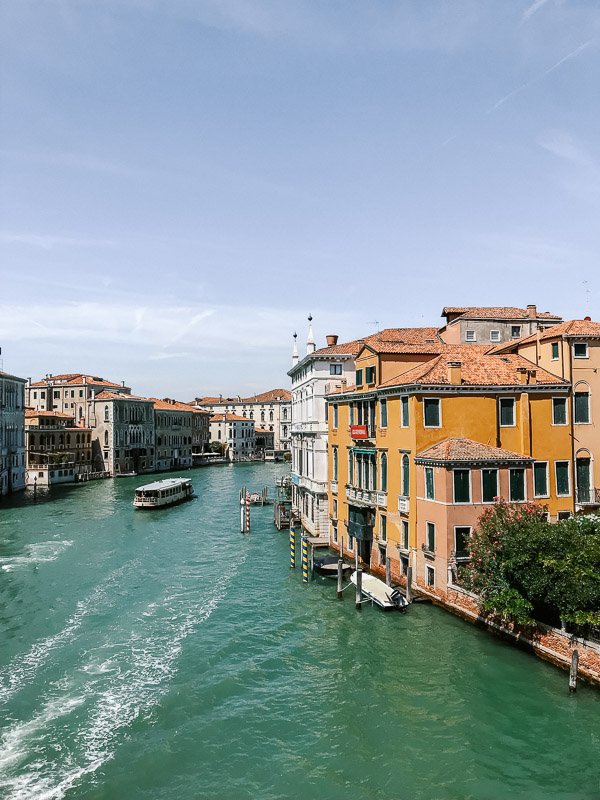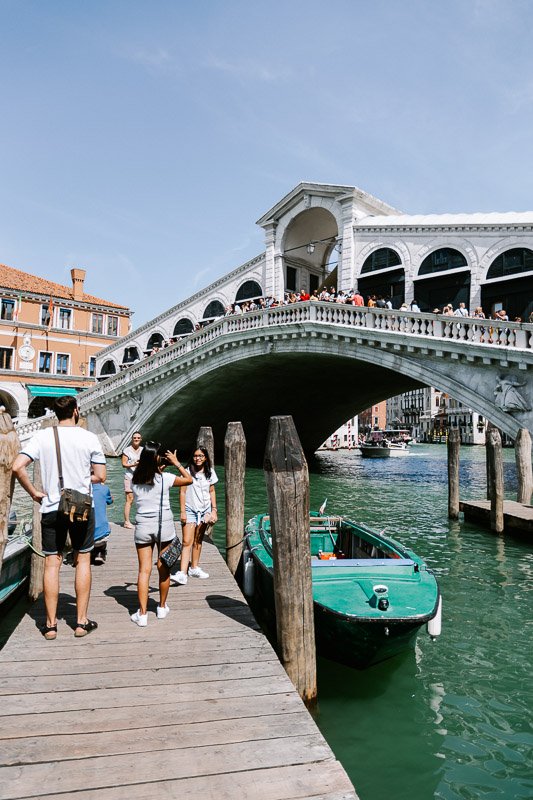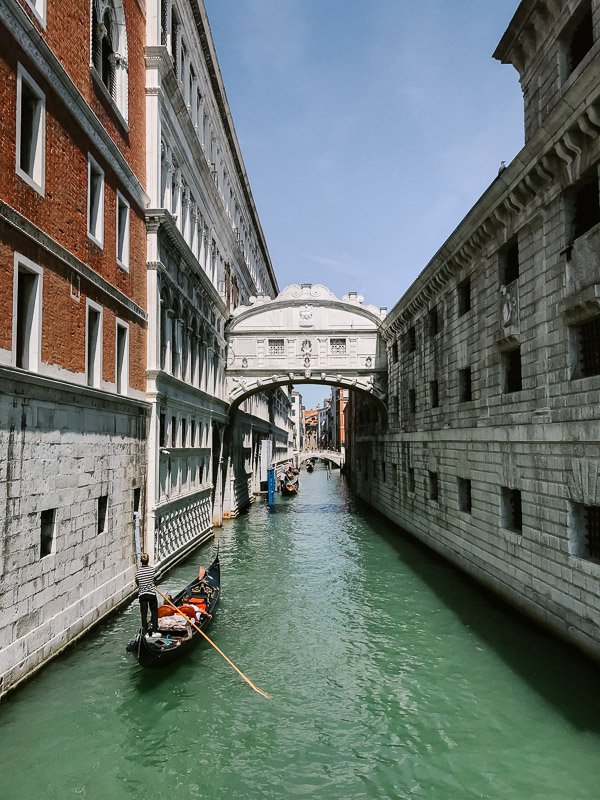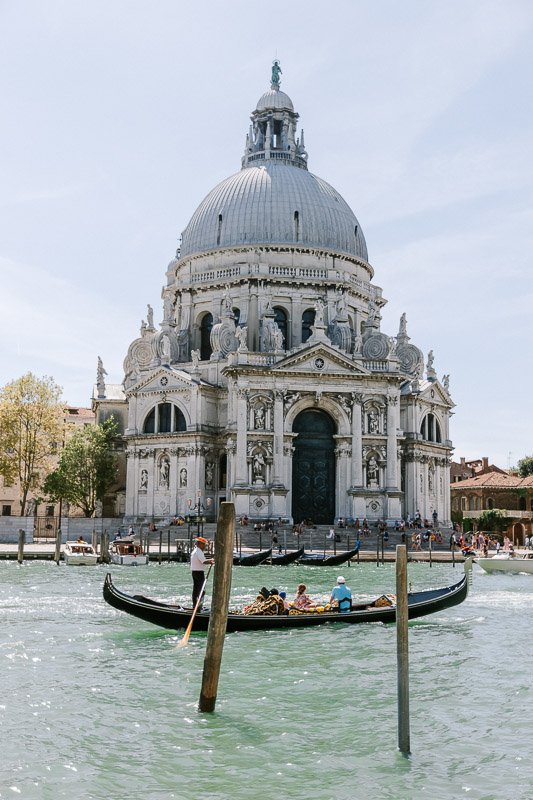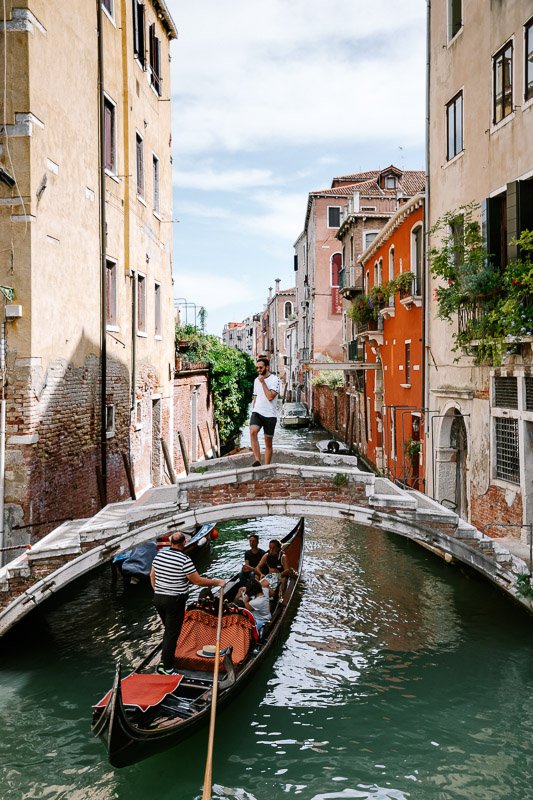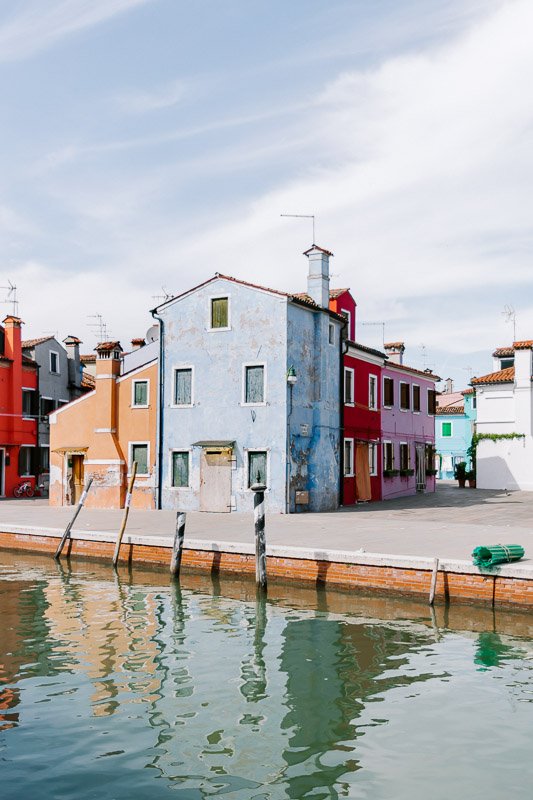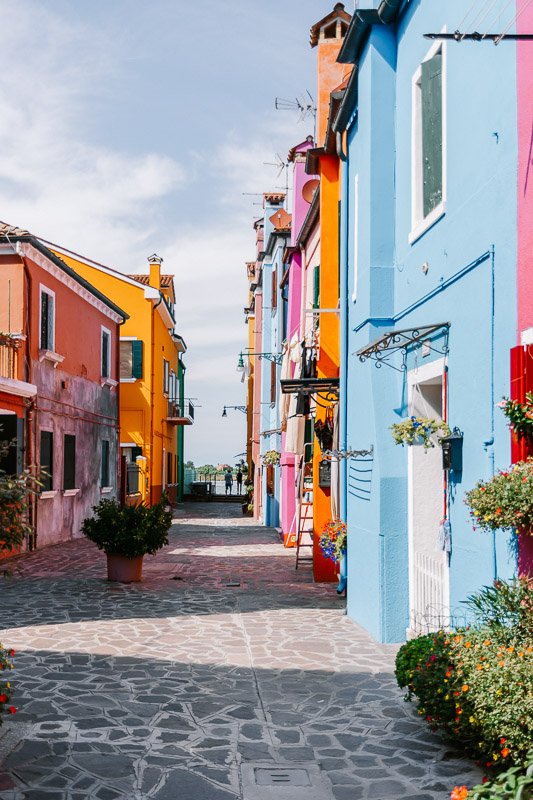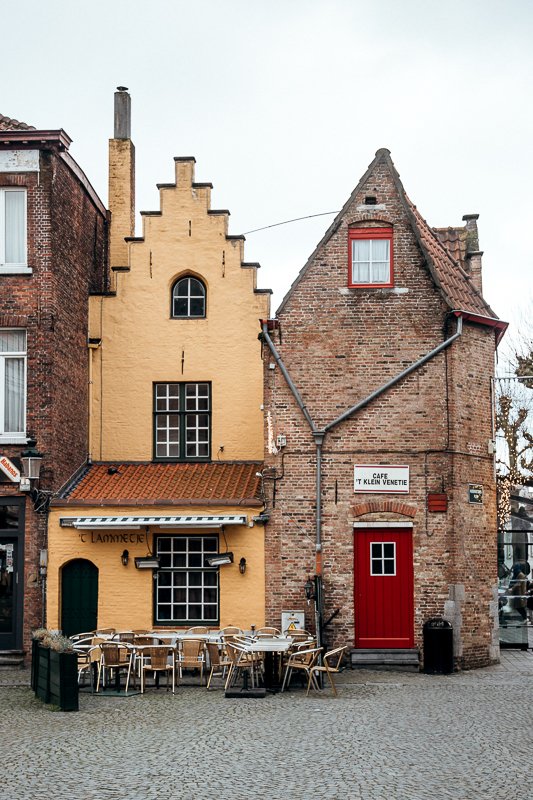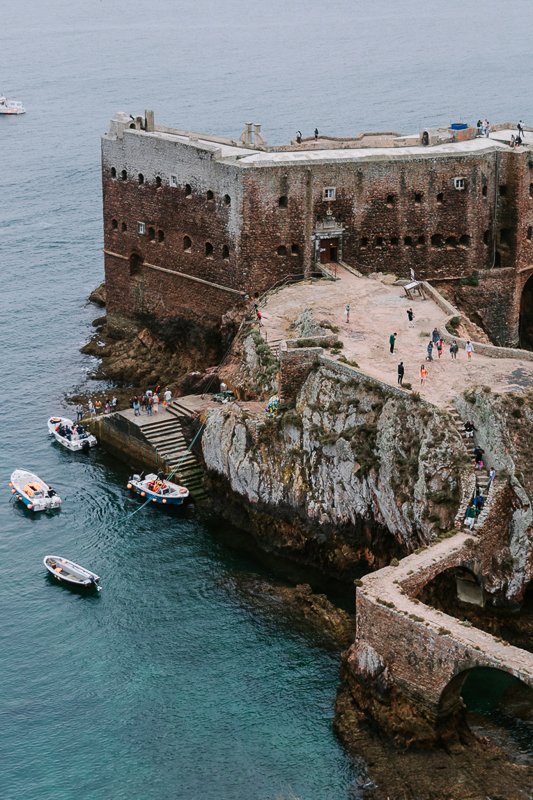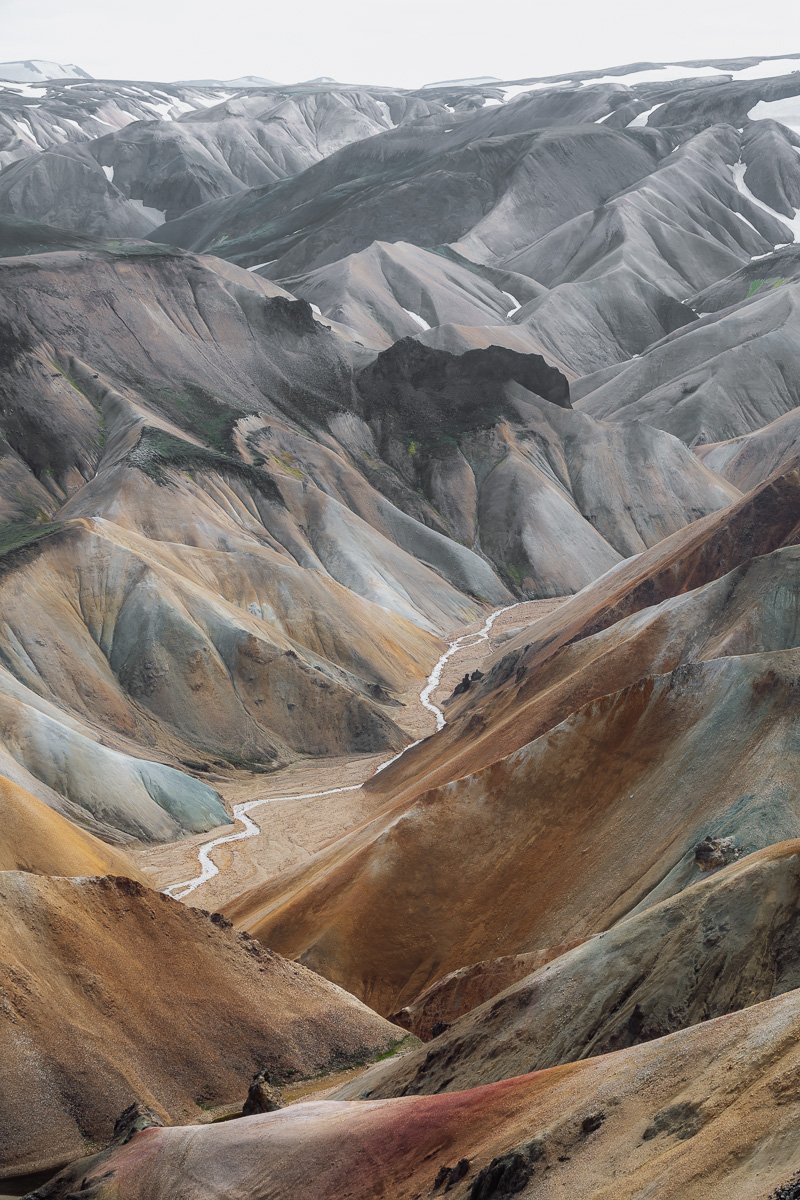Venice is a place of fascination. Unique in so many ways and with a charm unmatched anywhere else in the world. Read our guide to find all of the must-see places in Venice.
— Visited in August, 2019
Venice for me is a place of fascination that I dreamt of visiting since I was a child. The concept of canals as streets and the typical gondolas being the main form of transport sounded like a fairytale. With the whole place being completely different from any lifestyle I had known or witnessed, you could say I was a little excited when we finally booked tickets to visit Venice.
Despite my expectations of visiting this place being extremely high, Venice surpassed all of them. I fell in love with this destination and look forward to walking you through all of the marvels that Venice has to offer.
I hope you enjoy… Our guide on what to see in Venice.
Blog Content
A Brief History of Venice
Venice (Venezia) was first founded in 421. The Veneti were expelled by the Ostrogoths and the Lombards, leaving them to take refuge in the marshlands forming the city of Venice. In the 6th Century, Flavius Belisarius (a general of the Byzantine Empire) conquered Venice bringing it under the Eastern Roman Empire and a part of the Exarchate of Ravenna.
In 641, the mainland Byzantine city of Oderzo fell to the Lombards and the political authority was shifted to one of the islands within Venice. Continuing in 697, the powerful families of Venice placed the first doge Anafestus Paulicius in power dramatically increasing the importance of Venice.
An important part of history occurred in 829 when the relics of Saint Mark the Evangelist were stolen from Alexandria in Egypt and smuggled to Venice. San Marco would then become the city’s patron saint with the relics held in St Mark’s Basilica.
The true strength of Venice started in the 11th Century when the Byzantine emperor Alexius I Comnenus granted Venice unrestricted trade throughout the Byzantine Empire. This privilege marked the beginning of Venetian activity in the East allowing Venice to become an imperial power through their trade of fish, iron, silk, spices, slaves and wood. This led to the development of the Latin Empire.
What to See in Venice
Venice is made up of 118 small islands connected through a series of bridges and canals, so there is a lot to see. This city holds so much character and history, you’ll need a minimum few days to even scratch the surface. To truly experience Venice and all it has to offer, a lifetime is required. So instead of trying to see everything, make the most of your time here and be ready to want to return.
For your first trip to Venice, let us guide you through its must-see spots. Let this be the first taste of what this magical city has to offer.
St Mark’s Basilica
The most famous building in Venice, St. Mark’s Basilica (Basilica di San Marco) is an outstanding piece of architecture and one that must be witnessed in person to truly appreciate. It is recognised as one of the most important religious buildings in Northern Italy and sits the Patriarch of Venice, archbishop of the Roman Catholic Archdiocese of Venice.
Dating back to the 11th Century, the building has been known by the nickname Chiesa d’Oro (Church of gold). This is because of the lavish design of gold ground mosaics that cover the magnificent structure. The design was used as a symbol of Venetian wealth and power and there is no doubting this after witnessing its beauty.
Piazza San Marco
Widely known as the most famous square in Venice. The sheer size of Piazza San Marco (St Mark’s Square) trumps all other squares, making it the largest square in Venice. Located on the grand canal, the square is home to St. Mark’s Basilica, St Mark’s Campanile, Doge’s Palace and Torre dell’Orologio. Other than these famous landmarks, the square is surrounded by a series of arched walkways which truly fit the vibe of the place.
Tip: We do not recommend eating or even having a coffee on this square. The extravagant prices, which must allow a surcharge for the view, are likely to dig deep into your travel budget.
Canale Grande
Though Venice has hundreds of canals, it is hard to miss the largest, the Canale Grande (Grand Canal). This canal is equivalent to a river in comparison to the stream like channels through the city’s streets. It is impressive to behold as it passes from one side of Venice through to the other.
Only four bridges span the grand canal leaving it generally open to hustling traffic and larger boats. Though this may not be the quaint and hidden canals that you came to Venice to see, we recommend spending some time along these waters. This is where you can appreciate the grand scale of the city as it sits only centimetres above the surrounding sea.
St Mark’s Campanile
Standing at 98.6m, St Mark’s Campanile (Campanile di San Marco) is the tallest building in Venice. Created in the 9th century, the structure was damaged by fire, earthquakes and even lightning, resulting in its collapse in 1902. The structure that now stands here is a reconstruction completed in 1912.
The tower is located in St Mark’s Square near the mouth of the Grand Canal. It was originally intended as a watchtower to protect the city from approaching ships. However, it also served as a landmark to guide Venetian ships back home to safety.
Though a simple red brick design for most of the structure, the upper stoned archways and the golden statue of Angel Gabriel on top allows the tower to stand out. The true appeal of the tower is once you reach the top of it. Providing panoramic views of Venice, it’s a fantastic way to appreciate the city and the best views you’ll find in Venice.
Rialto Bridge
Connecting the San Marco and San Polo districts of Venice over the grand canal, the Rialto Bridge (Ponte di Rialto) is both one of the most famous views of Venice and one of the most important functionally. While its perfectly symmetrical design will forever catch your eye, you will also find yourself on this bridge without even meaning to be as it is one of the key pedestrian routes of the islands.
The first bridge in this location was a pontoon bridge back in 1173. It was rebuilt several times in many forms until the collapse of a wooden bridge in 1524. After this event, it was replaced with the stone bridge that still sits here now.
Doge’s Palace
Serving as the main government building during the Venetian Republic and the residence of the Doge, this palace (Palazzo Ducale) is one of the most recognised buildings in Europe. With its distinct Gothic architecture, it’s fascinating to look upon the sheer size of the pink Verona marble structure as its weight bears down on the slender arched columns.
One of the most fascinating things about Doge’s Palace, which is now a museum, is that, unlike most museums, the paintings inside are the originals used to decorate the Doge’s Palace. This means that though you may be witnessing magnificent art, you are also able to appreciate the fact that you are walking through this magnificent palace as it always has been.
While the exterior is obvious to marvel upon, we definitely recommend a visit inside to learn the history behind this place. To avoid the lines, which are significant with this being one of the most popular places to visit in Venice, we recommend checking out the tours below:
Bridge of Sighs
Connecting the Doge’s Palace with the first floor of the prison is the Bridge of Sighs (Ponte dei Sospiri). A delicate stone Baroque style arched bridge. The name gives a clear feeling to the stories behind this bridge. As the sentences given by Venetian judges were known to be unmerciful, regularly the view through the stone grillwork of this bridge provided prisoners with their last glimpse of Venice before being taken to prison or even a death sentence.
Rumour has it that if a couple sails under the bridge on a gondola and kiss, they will enjoy eternal love. An alternative take on why it’s called the Bridge of Sighs.
Santa Maria della Salute
With its Baroque design, the Basilica di Santa Maria della Salute (Church of the Saint Mary of Health) was completed in 1687 and is identified as a minor basilica of the Roman Catholic Church. Located facing out towards the grand canal, it makes for a grand vision from the other side of the water. Though the detail may not match that of other churches in Italy, the symmetrical nature of the design and bright white marble provides a lot of fancy on the eye.
Get Lost in the Back Streets
A lot of people might say that Venice is overcrowded which ruined their trip. If you stay on the main path around this group of islands, then this could be true and is often of many cities in Europe. The magic of Venice is found when you take an unexpected left or right turn and end up in a quiet part of the neighbourhood with a hidden gem all to yourself. The great part about Venice is that every wrong turn you take leads to a spot like this.
The time we spent in the backstreets of Venice is where we truly grew to love the city. Sitting by a quaint junction between two canals. Watching a gondola slowly paddle away from us through the mazed city of water. These are the moments when we really absorbed the city and appreciated just how amazing and unique this place is.
Because of this, our biggest tip is to get lost in the city’s maze. It’s not hard to do, as Google Maps does not work very well in Venice. Enjoy those moments when you are away from the crowds and not sure where you are. This is when the place starts to feel like the Venice of old and becomes that fairytale of the mind.
Burano and Murano
Burano and Murano are two isolated sets of islands about 30-minutes from Venice by boat. Though Murano and Burano aren’t technically Venice anymore, a list of the must-visit places of Venice isn’t complete without including them.
Burano and Murano are two very small fishing villages. Though they may be small in stature, they are grand in charisma. The villages on these islands are special as all of the houses are painted in bright pastel colours. If you think of the houses you used to paint as a child, colouring the walls with the brightest crayons you could find. Then Burano and Murano are a real-life version of those drawings.
The story behind the colours is that the fishermen painted their houses in bright hues so that they could find their way home during the thick fogs that blanket this area. Another reason was so that the fishermen could distinguish their home from the property of their neighbour. This is why each house is painted in a different colour.
The major difference between Burano and Murano is the skill that they are most renowned for. Burano is most famous for the beautiful lace that is used to produce wonderful garments, while Murano is more famous for its creation of Venetian glass. The art of glassmaking can still be witnessed here today.
Where to Stay in Venice
Choosing where to stay in Venice can be challenging but wherever you choose, you’re a short distance from the fascination that is Venice. To make it easier for you, we’ve provided a bunch of budget options in the main neighbourhoods of Venice and the advantages of staying in those neighbourhoods.
San Marco
San Marco is the tourist hot-stop of Venice. It is where most of the iconic must-see locations are like St Mark’s Square and the Rialto Bridge. We recommend staying here if you want to be close to the sites or have a short time in Venice. However, there are cheaper options elsewhere.
Budget Option: Sweet Venice – locazione turistica
Cannaregio
Stay in Cannaregio if you want the authentic Venetian experience. This is home to where most of the local Venetians live and features some beautiful back streets and tranquillity. This is where we stayed and we cannot recommend it enough.
Budget Option: Casa Martini
Santa Croc
Santa Croc is Venice’s transportation hub and home to the Venice Bus Station (Piazzale Roma). As this location is away from the tourist spots, it’s a lot cheaper to stay! However, it is still only a 20-minute walk from the heart of Venice. If you like staying cheap and close to transportation hubs, then this is the place for you.
Budget Option: Casa Margherita
Mestre
Mestre is “mainland” Venice. A perfect option for those on a very tight budget, wanting more than a couple of days in the city and don’t mind the extra travel time. To get to the heart of Venice, you have to catch a 30-minute bus for around €3.
Budget Option: Nightstars B&B


